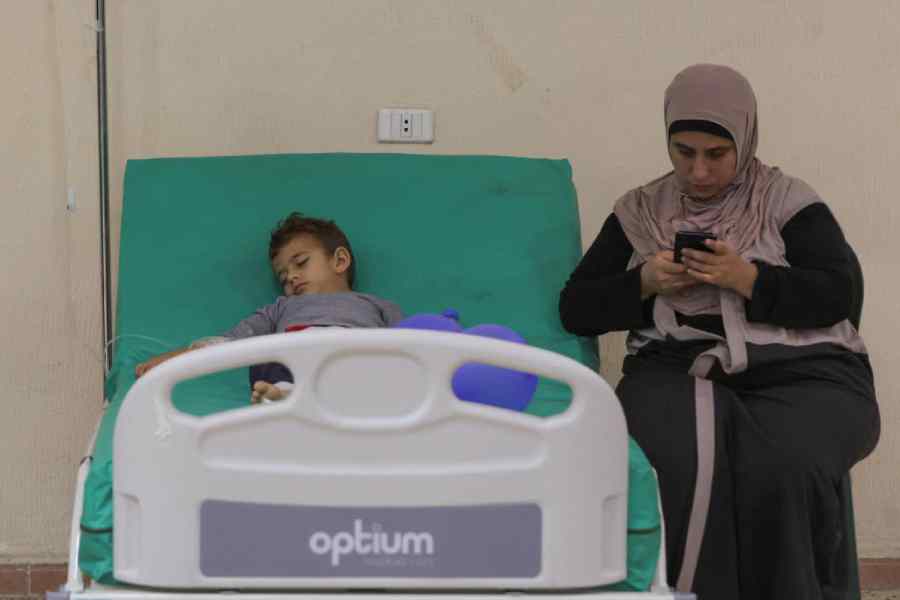The cholera outbreaks spreading across the globe are becoming more deadly. Deaths from the diarrheal disease soared last year, far outpacing the increase in cases, according to a new analysis by the World Health Organisation.
Cholera is easy to prevent and costs just pennies to treat, but huge outbreaks have swamped even well-prepared health systems in countries that had not confronted the disease in years. The number of cholera deaths reported globally last year increased by 71 per cent from 2022, while the number of reported cases rose 13 per cent. Much of the increase was driven by conflict and climate change, the WHO report said.
“For death rates to be rising so much faster even than cases are increasing, this is totally unacceptable,” said Philippe Barboza, who leads the cholera team in the health emergencies program of the WHO. “It reflects the world’s lack of interest in a disease that has plagued humans for thousands of years, afflicting the poorest people who cannot find clean water to drink,” he said.
More than 4,000 people were officially reported to have died from cholera in 2023, but the true number is probably far higher, Barboza said. The WHO’s efforts to model the actual number of cholera deaths, using data gathered from testing programs, found that the total death count for 2023 could be more than 100,000.
Cholera can cause death by dehydration in as little as a single day, as the body tries to expel virulent bacteria in streams of vomit and watery diarrhoea.
“How can we accept that in 2024 that people are dying because they don’t have access to a simple bag of oral rehydration salts that cost 50 cents?” Barboza said. “It’s not because they don’t have an ICU — it’s just IV fluid and antibiotics that they need.”
There were 45 countries with reported cholera cases in 2023, up markedly from 35 countries with cases in 2021. The global burden of the disease has shifted from West Asia and Asia to Africa, where there was a 125 per cent increase in cases in 2023 compared with the previous year.
Cholera’s spread in southern Africa has been propelled by catastrophic weather events, including both floods and droughts. When people lack access to water, they often crowd around a few sources, which, if they become polluted, can quickly sicken thousands.
Zambia and Malawi both mounted strong responses to cholera outbreaks, Barboza said, but their health systems were overwhelmed. In the Zambian capital, Lusaka, the government had to set up a cholera treatment centre in a stadium.
In Sudan, where more than 9 million people have been displaced by a brutal civil war, people are packed into camps with minimal sanitation infrastructure. Nevertheless, health workers managed to bring a cholera outbreak under control last year, said Dr Bashir Hamid, health and nutrition director for Save the Children in Sudan. But now, he said, the disease is back, with more than 5,600 cases reported since mid-August.
“We are seeing children who are already badly weakened by malnutrition, and they have no defence against cholera,” Hamid said.
In 2023, very large outbreaks, defined as more than 10,000 suspected or confirmed cases, were reported by nine countries: Afghanistan, Bangladesh, Congo, Ethiopia, Haiti, Malawi, Mozambique, Somalia and Zimbabwe. This was more than double the number of such outbreaks reported annually from 2019 to 2021, the WHO found.
Overall in 2023, the organisation registered 535,321 cases globally, up from 472,697 the year before.
Currently, there are 24 countries with cholera outbreaks; the number of cases and deaths usually spikes toward the end of the year because of weather patterns.
The cholera crisis has also been exacerbated by a persistent global shortage of vaccines. Demand has outstripped supply for years, ever since key producers stopped making it. All of the market for cholera vaccines is low-and middle income markets, where the product sells for as little as $1.50 per dose.
In 2022, the organisation that manages the global emergency stockpile of cholera vaccines, made an unprecedented recommendation that people in outbreak areas receive only a single dose of the vaccine instead of the standard two, in an effort to stretch the supply. One dose of the vaccine provides six months to two years of protection from cholera, while the full regimen of two doses, delivered a month apart, gives adults roughly four years of protection.
In 2023, countries with outbreaks requested 74 million doses of the vaccine. Fewer than half of the requests could be filled, and no vaccines remained for preventive campaigns in vulnerable places such as Sudan or the Gaza Strip.
“When we got access to the vaccine for the outbreak last year, it really helped a lot,” said Hamid, who is based in Port Sudan.
New York Times News Service










